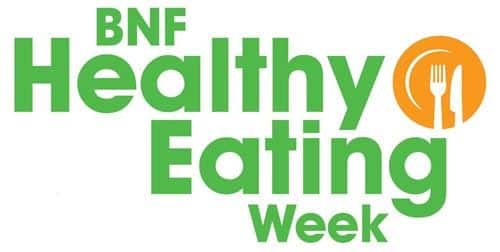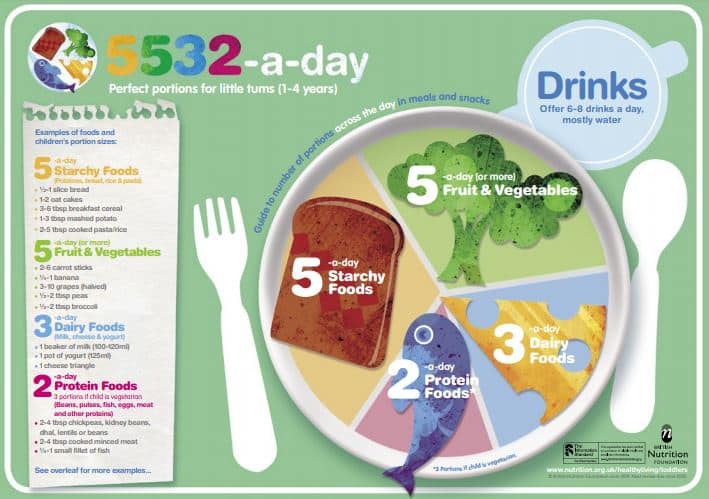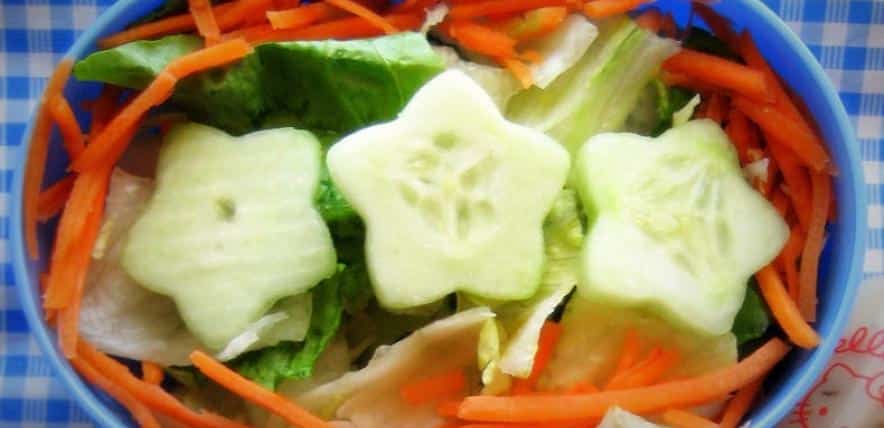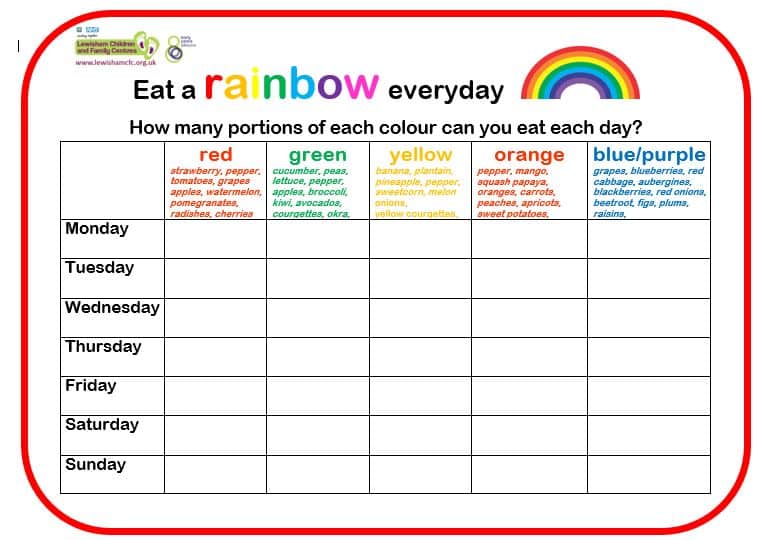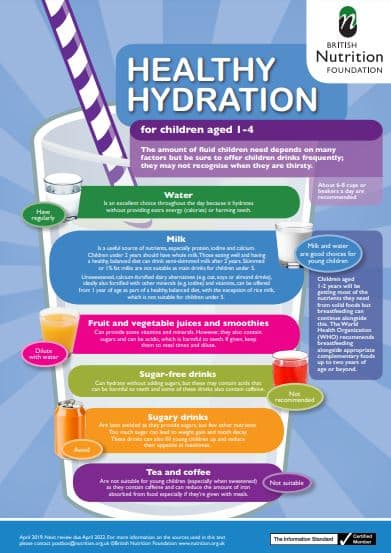Healthy Eating Week
Developing healthy eating habits early can make sure your child maintains a healthy lifestyle in later life. A healthy diet is about getting the right balance of foods and drinks in the right amounts. This guide from the British Nutrition Foundation has portion size examples for a range of foods to give you an idea of what is appropriate to offer – children’s appetites can vary a lot so let them decide how much to eat.
Young children need a variety of foods from the main food groups:
- Starchy foods – about 5 portions a day
- Fruit and vegetables – 5 or more portions a day
- Dairy foods – about 3 portions a day
- Protein foods – about 2 portions a day (3 portions for vegetarian or vegan children)
How do I know what a child’s portion size is?
Use the 5532 resource above or other portion size resources that include easy to measures like spoonfuls or just counting out foods. Child-sized plates/bowls/cups can help you avoid the feeling that it doesn’t look like enough.
How do I know how much to feed my child each day?
Just like us grown-ups, lots of different things can affect your child’s appetite. They may be really hungry if they’ve been active and less so if they’ve had a slow day. Sometimes they may want very little for breakfast but are really hungry at lunchtime. If they’re having a growth spurt they can need a lot more food for a short period. In general children are quite good at regulating their intake especially if they are having food rather than snacks and sugary drinks. Use the portion size ranges above as a guide but remember that appetite can vary from day to day and not to worry too much.
What to do I do if they still want more?
Serve smaller portions to start with, use a child-sized plate can really help as they look fuller. Try and encourage them to eat more slowly when you can as it can help them realise when they are full. But if your child is still hungry let them eat to their appetite with healthy foods rather than snacks between meals.
My child refuses to eat certain foods – especially the healthier ones
It is important that young children eat a variety of foods from the main food groups each day but we all know that it’s not always that easy. Try not to make mealtimes a battleground by insisting certain foods are eaten, banning favourite snacks or using treat foods to encourage them to eat a healthier diet. Try these tips;
- Eating healthier meals yourself and as a family, and eat with your child when you can. Seeing others (especially siblings) enjoying something new can be really helpful.
- Talking about the health benefits of certain foods such as carrots to make you see in the dark and spinach to make you strong can be really motivating for children.
- Try and make mealtimes fun. Let your child choose some new foods based on colour shape or healthy benefit and let them help prepare them if they are old enough. Using cutters to make foods into fun shapes such as stars or hearts can be a fun activity.
- Foods for Superhero strength or a bunny lunch adding carrot sticks can be a fun way for your child to try something new. Ask them if they feel more like jumping after eating their bunny lunch, or if their nose twitching can be really fun.
- Eating a rainbow can also be fun for children.
- Even if they don’t eat the new food straight away they may have enjoyed making something new and the more often they see it on their plate and everyone else’s the more likely they are to try it, especially if no one makes a fuss about eating it or leaving it. Children and babies may take more than 10 tries before they accept something new.
- No matter how hard you try there will be some things your child doesn’t like – just like us adults. You could try offering them later on as a snack – cucumber or raw vegetables with a little hummus is a good one. Or it may be that your child likes something cooked rather than raw.
- If your child really doesn’t like a vegetable, it can always be blended and used up in meals such as soups or a pasta dish and fruits can be made into healthy lollies or mixed into porridge.
My child refuses to eat all the food on their plate
I think we all had some pressure to “eat up” when we were children but this can cause problems later on. Children are usually very good at knowing when they are full so try to avoid pressuring your child to finish all the food on their plate. If they are full, try to offer the food later on.
Keeping hydrated
Making sure that your child has enough to drink during the day is also really important
We run regular workshops and courses that focus on Healthy Eating and Weaning, check our timetable to sign up to our next sessions.
You can also speak to a member of the team if you would like some more support around your child’s eating and diet, send us a message via our contact us page and someone will be in touch.


